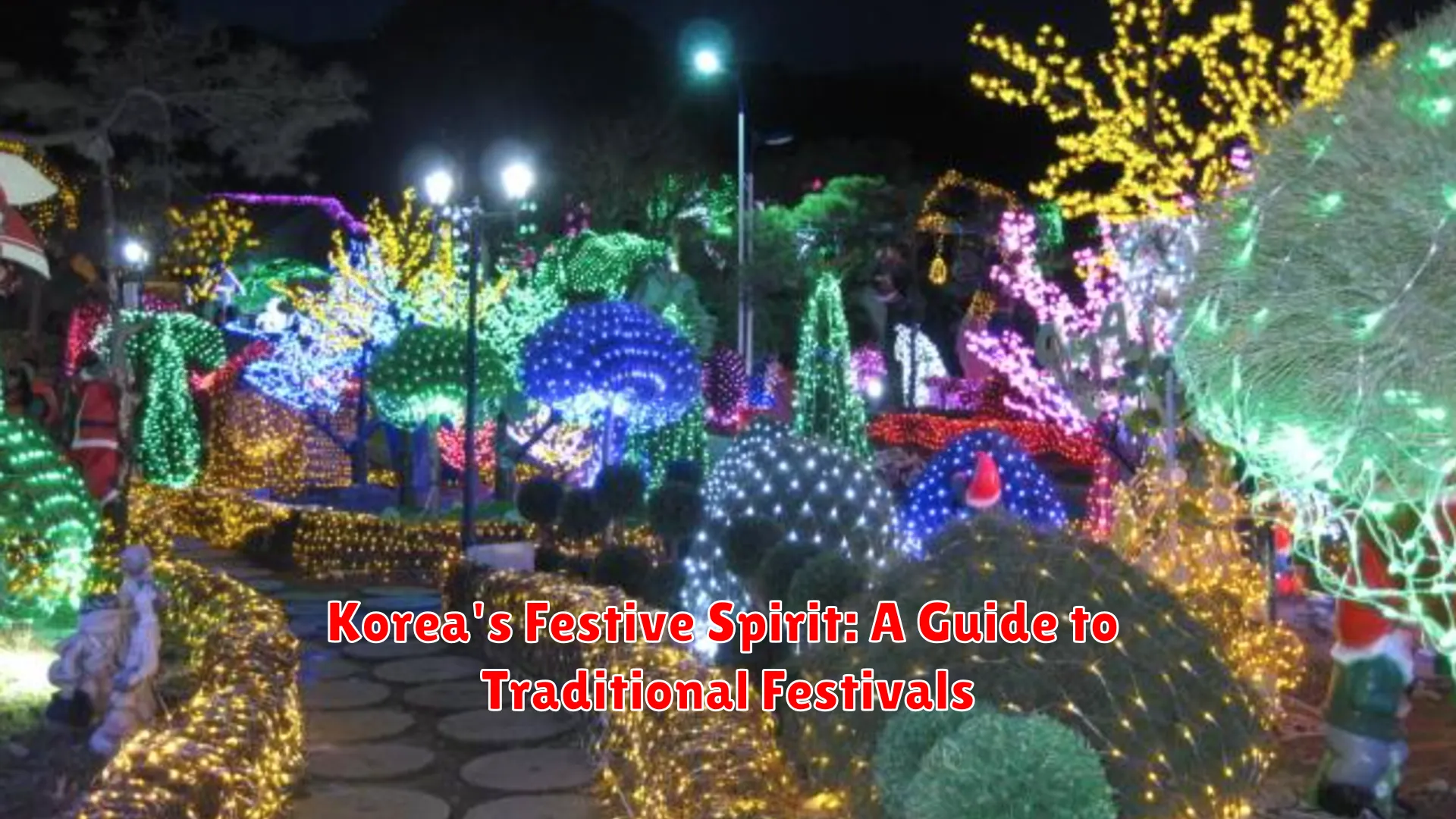Experience the vibrant cultural tapestry of South Korea with our guide to traditional festivals, showcasing the country’s rich heritage and festive spirit.
Celebrating Seasons: Korea’s Traditional Festivals
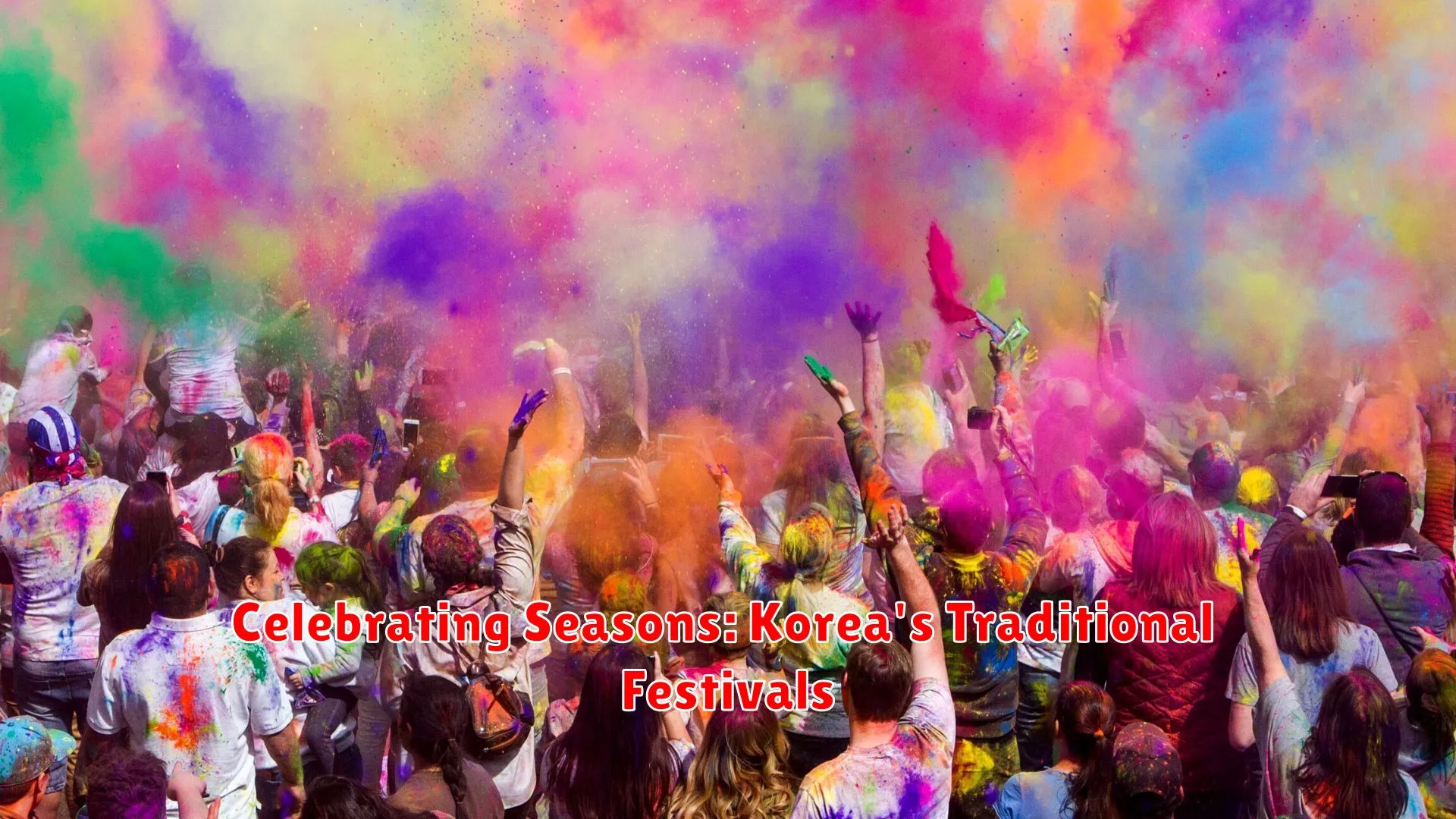
In Korea, traditional festivals play a significant role in celebrating various seasons throughout the year. These festivals are deeply rooted in Korean culture and offer unique insights into the country’s rich heritage.
Spring Festivals
During the vibrant spring season, Koreans celebrate festivals like the Cherry Blossom Festival where streets are adorned with delicate pink blooms, creating a picturesque setting for visitors and locals to enjoy.
Summer Festivals
In the summer months, Koreans partake in events such as the Boryeong Mud Festival that attracts crowds with its mud wrestling and mudslides, creating a fun and refreshing escape from the heat.
Autumn Festivals
Autumn in Korea is marked by festivals such as Chuseok, a harvest festival where families reunite, pay respects to ancestors, and enjoy traditional rituals and delicious food.
Winter Festivals
As winter blankets the country, Koreans celebrate festivals like the Hwacheon Sancheoneo Ice Festival, where visitors can experience ice fishing and other winter activities in a stunning icy wonderland.
These traditional festivals showcase the essence of Korean culture and tradition, providing a unique opportunity for both locals and tourists to immerse themselves in the festive spirit and create lasting memories.
The Cultural Significance of Korean Festivals
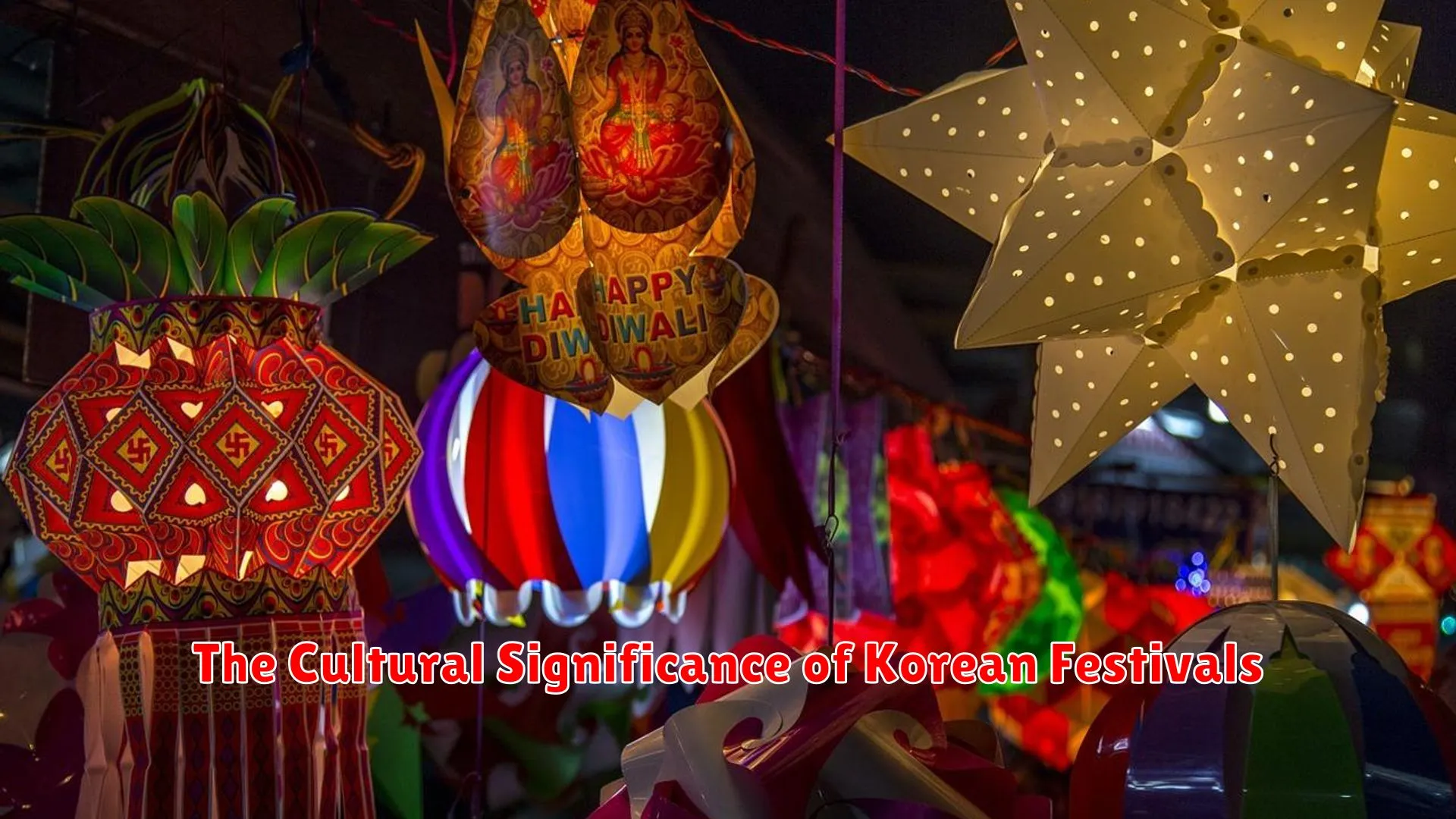
Korean festivals hold immense cultural significance, serving as vibrant celebrations that honor traditions, history, and community spirit. These events are not only about entertainment but also deeply rooted in the country’s rich heritage.
Symbolism: Each festival in Korea carries symbolic meanings that reflect the values and beliefs of the Korean people. From the majestic lanterns of the Jinju Namgang Yudeung Festival symbolizing hope and enlightenment to the vibrant colors of traditional attire during Chuseok signifying prosperity and abundance, symbolism plays a vital role in these festivities.
Community Engagement: Festivals provide a platform for communities to come together, fostering unity and solidarity among Koreans. They offer a sense of collective identity and pride, as people from various backgrounds gather to participate in cultural activities, performances, and rituals.
Promotion of Cultural Heritage: These events play a crucial role in preserving and promoting Korea’s cultural heritage. Traditional dances, music, crafts, and culinary traditions are showcased during festivals, ensuring that these aspects of Korean culture are passed down to future generations.
Tourism and Global Recognition: Korean festivals attract both domestic and international visitors, contributing to the country’s tourism industry and enhancing its global reputation. Festivals like the Boryeong Mud Festival and the Andong Mask Dance Festival have gained worldwide recognition, showcasing Korea’s unique cultural offerings.
Must-Attend Festivals for First-Timers
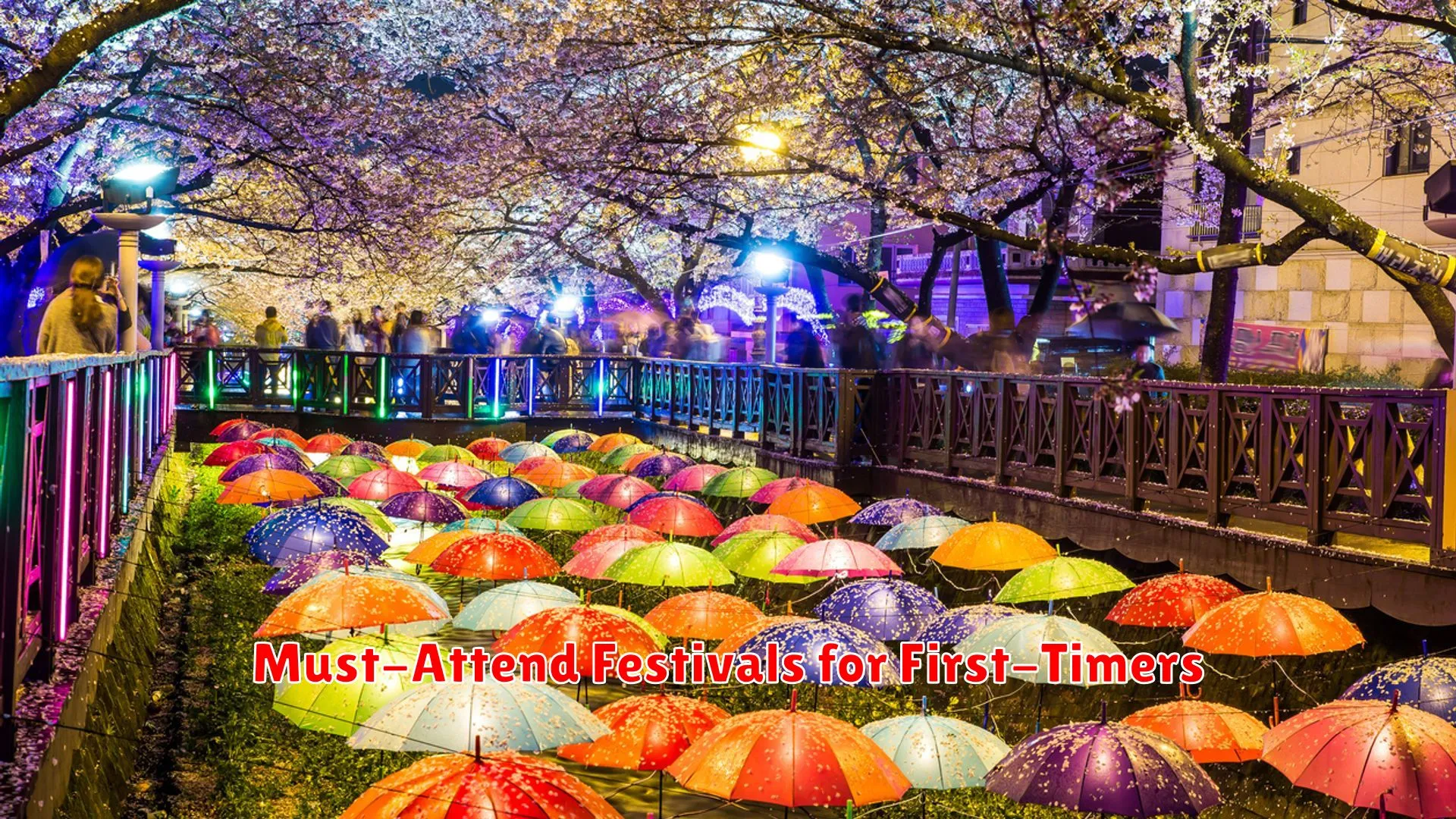
When exploring South Korea’s vibrant traditional festivals, there are a few events that first-time visitors should not miss. These festivals capture the essence of Korean culture and offer unique experiences that showcase the country’s rich heritage. Here are some must-attend festivals:
1. Cherry Blossom Festivals
Spring in Korea is marked by the breathtaking beauty of cherry blossoms. The Cherry Blossom Festivals, held in various locations throughout the country, offer a stunning display of pink and white blooms, creating a picturesque backdrop for visitors to enjoy outdoor picnics and take in the beauty of nature.
2. Danoje Festival
The Danoje Festival, celebrated in May in Gangneung, is a traditional event that dates back to the Joseon Dynasty. This festival features colorful traditional performances, games, and rituals that highlight Korean customs and folklore. Visitors can witness age-old traditions come to life during this lively celebration.
3. Boryeong Mud Festival
For a fun and unique experience, the Boryeong Mud Festival held in July is a must-visit. Participants can enjoy mud wrestling, mudslides, and various mud-related activities. This festival is a mix of adventure, relaxation, and healthy mud-related skin treatments.
4. Andong Mask Dance Festival
The Andong Mask Dance Festival, held in October, showcases traditional mask dance performances that have been passed down through generations. This cultural event provides insight into Korean folklore and offers visitors a glimpse into the country’s spiritual beliefs and artistic traditions.
How to Fully Enjoy Korean Festivals
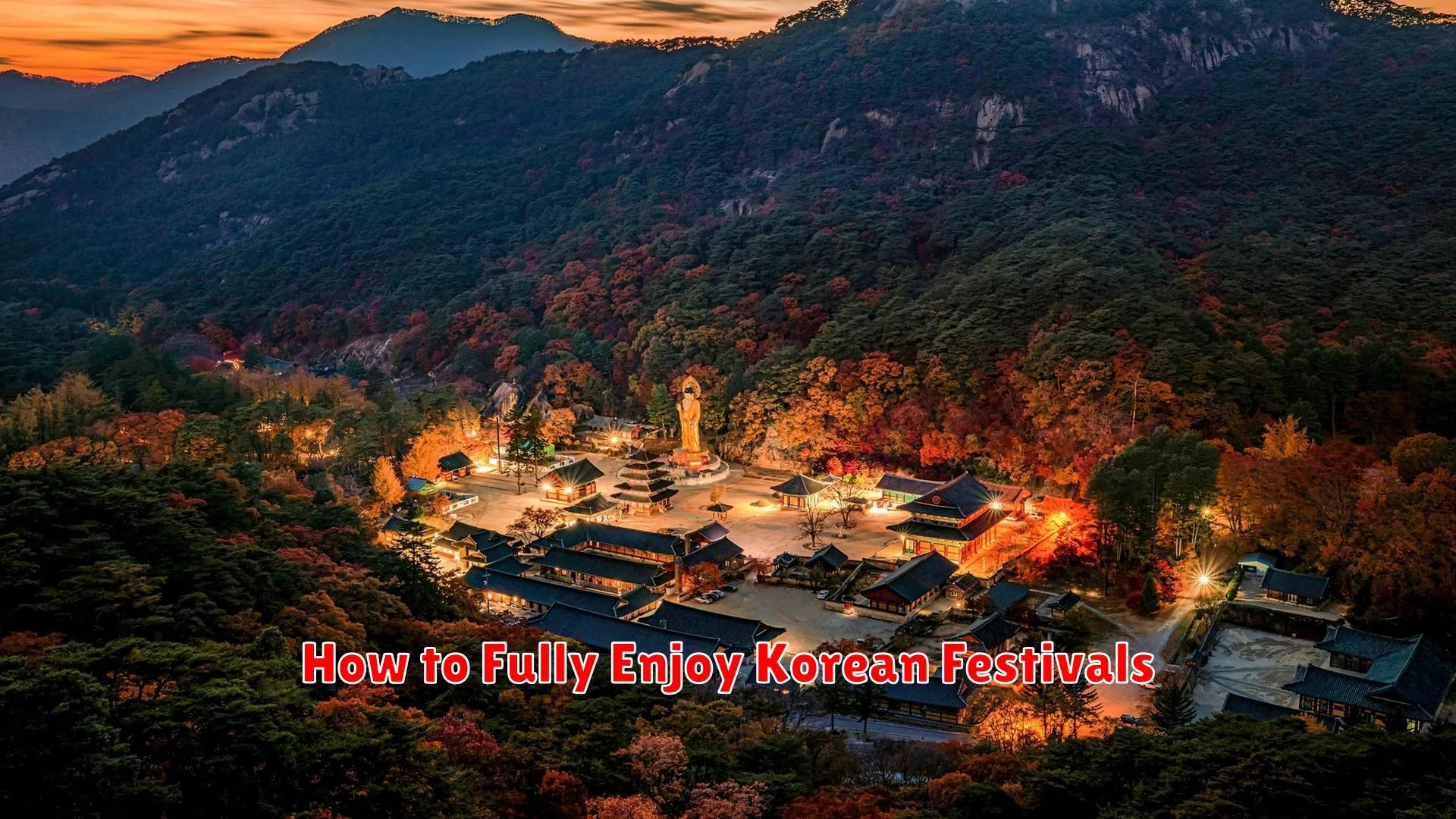
Attending Korean festivals is a fantastic way to immerse yourself in the rich culture and festive spirit of Korea. To make the most of your experience, here are some tips to ensure you fully enjoy Korean festivals:
- Plan Ahead: Research and mark your calendar for the upcoming festivals in Korea. Check the dates, locations, and events taking place to avoid missing out on any highlights.
- Embrace the Traditions: Take the time to learn about the cultural significance of the festival you are attending. Understanding the traditions and customs will deepen your appreciation for the event.
- Try the Traditional Foods: Korean festivals are known for their delicious street food offerings. Don’t miss the opportunity to savor authentic Korean dishes and snacks available at the festival stalls.
- Participate in Activities: Join in the festive activities such as traditional performances, parades, and hands-on workshops. Engaging in these activities will enhance your experience and create lasting memories.
- Interact with Locals: Take the chance to interact with locals and fellow festival-goers. Engaging with people and learning about their experiences can provide valuable insights and connections.
- Capture the Moments: Be sure to bring a camera or smartphone to capture the vibrant atmosphere and memorable moments at the festival. Photographs and videos will allow you to relive the excitement long after the event ends.
- Respect the Culture: Remember to be respectful of the cultural norms and practices during the festival. Follow any guidelines or rules set by the organizers to ensure a harmonious and enjoyable experience for everyone.
By following these tips and immersing yourself in the festive spirit of Korean festivals, you can have a truly unforgettable cultural experience in Korea. So, get ready to celebrate and enjoy the vibrant traditions that make Korean festivals so special!
The Role of Food in Korean Festivals
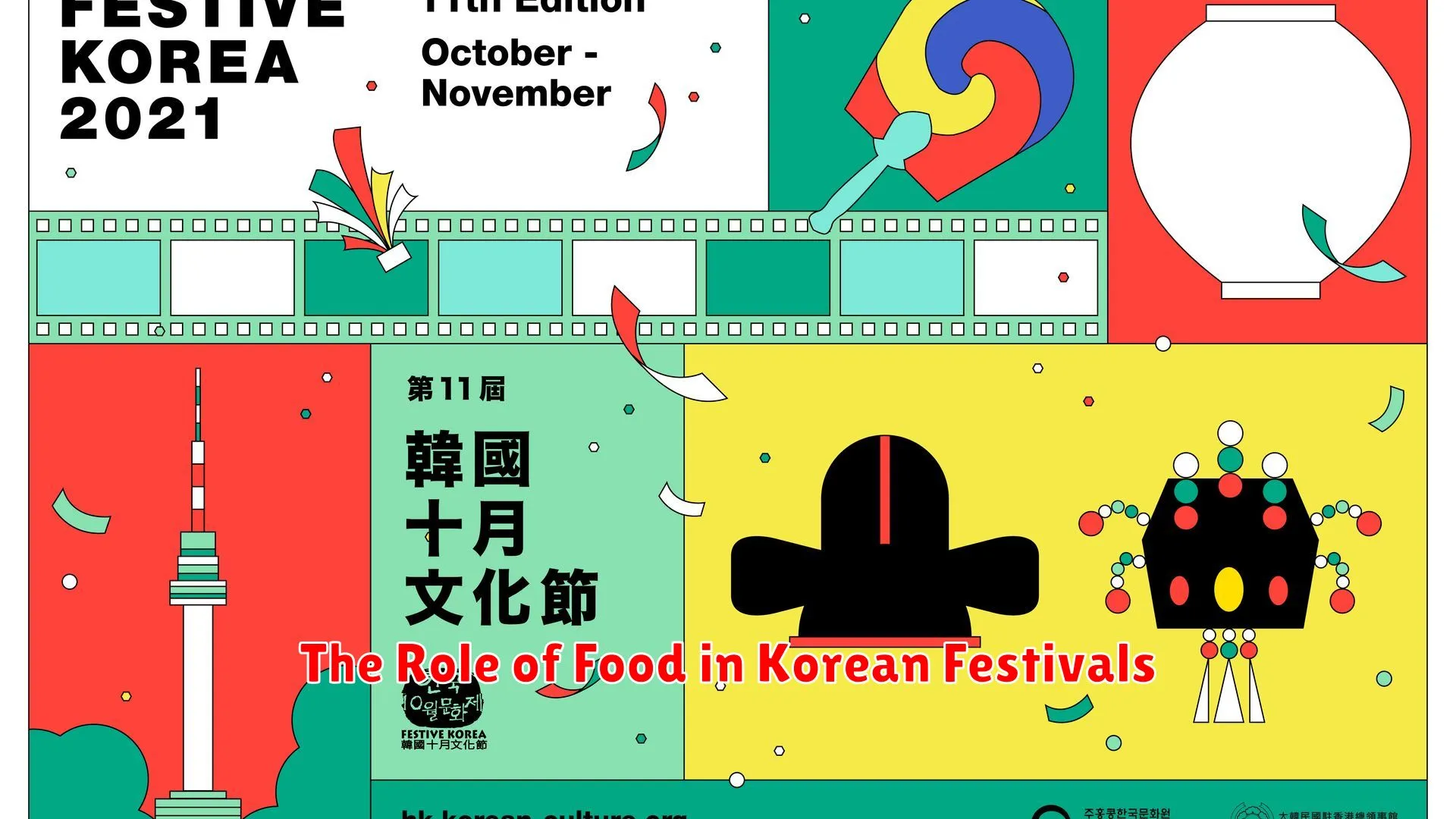
Food plays a central role in Korean festivals, representing a blend of tradition, culture, and celebration. In these vibrant and lively events, culinary delights take center stage, offering a glimpse into the rich heritage of Korean cuisine.
One of the most iconic dishes synonymous with Korean festivals is tteokguk, a hearty soup made with sliced rice cakes and served as a symbol of prosperity and good luck. During the Lunar New Year or Seollal, families across Korea gather to enjoy this dish, believing that consuming tteokguk adds another year to their age.
Another popular festival treat is songpyeon, a type of rice cake filled with sweet ingredients like sesame seeds, honey, and red beans. Traditionally made during Chuseok, the harvest festival, songpyeon showcases the importance of gratitude and family unity in Korean culture.
Apart from these specific dishes, festivals in Korea also feature a wide array of street food stalls offering tteokbokki (spicy rice cakes), jeon (pan-fried delicacies), and bibimbap (mixed rice with vegetables and meat). These culinary delights not only tantalize the taste buds but also create a sense of community and joy among festival-goers.
The diverse flavors and aromas of Korean festival foods reflect the country’s culinary heritage and the importance of sharing meals as a way to bond and celebrate. So, whether you’re attending a traditional celebration or exploring the bustling streets of Korea during festival season, be sure to immerse yourself in the delightful world of Korean cuisine.
Conclusion
Embracing Korea’s vibrant traditional festivals offers a captivating glimpse into the country’s rich cultural heritage and festive spirit.
